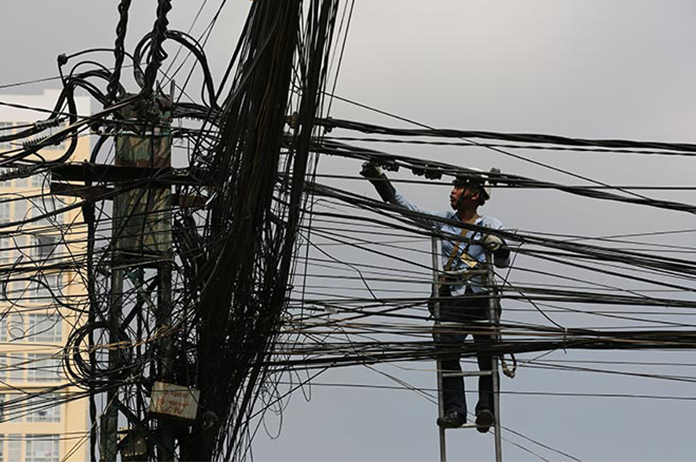National Grid To Reach All Provinces Next Year

The government says it plans to have all 24 provinces in the country connected to the national grid by 2020.
Five provinces still lack access to the national power grid – Tboung Khmum, Kampong Thom, Oddar Meanchey, Ratanakkiri, and Mondulkiri.
Speaking at the Electricity Authority of Cambodia’s annual meeting yesterday, Yim Viseth, chairman of the agency, said that these provinces receive energy indirectly from the national grid or are serviced by private companies, which makes electricity tariffs higher. Once they are connected to the national grid, the power supply will become cheaper and more reliable, he added.
“Our aim is to have these five provinces connected to the national grid by next year,” he said.
Cambodia now has 2,141 kilometres of transmission lines and 33 substations. Mr Viseth called on the private sector to partner up with the government to help achieve the goal.
“As we aim to expand the national grid, it is the government’s policy to enter partnerships with private companies that can help build the necessary infrastructure in villages across the country.”
The government has previously stated that its goal is to electrify all villages in the country by 2020. Currently, 87 percent of the country’s 14,168 villages have access to power.
Suy Sem, the Minister of Mines and Energy, said, “Just over 10 percent of villages are not electrified, so we firmly believe that we will reach our goal.”
Last year, Cambodia consumed 2,650 megawatts, a 15 percent increase compared to a year earlier. 442 MW were imported from Thailand, Vietnam, and Laos in 2018.
Cambodia signed a deal with Laos last month in which it agreed to increase energy imports from the neighbouring nation. The deal was signed in Vientiane during the visit of a Cambodian delegation that included Prime Minister Hun Sen.
Provinces near the border with Laos – including Preah Vihear, Stung Treng, Ratanakkiri, and Kratie – will be supplied electricity produced in Laos, according to the agreement.
The agreement was signed the same month that the Lower Sesan II Dam in Stung Treng started operations. The hydropower plant is capable of generating 400 MW.